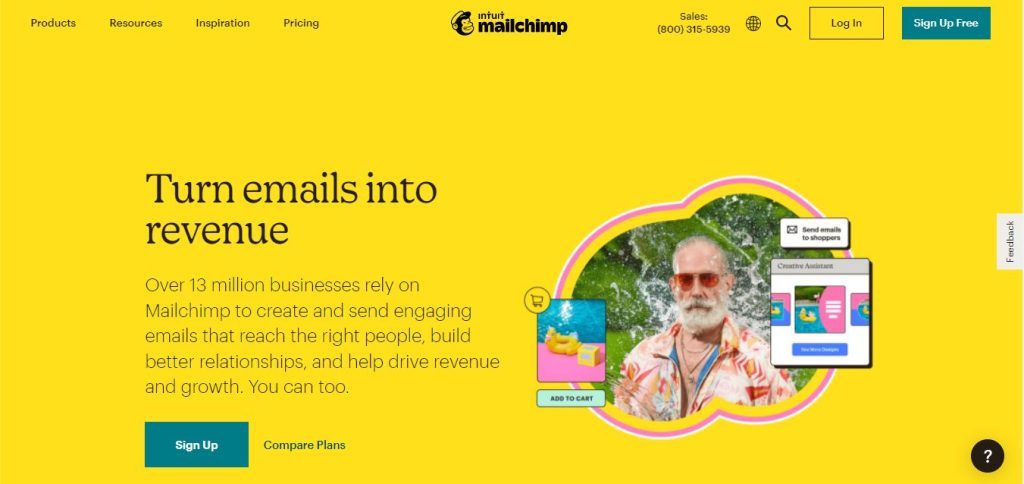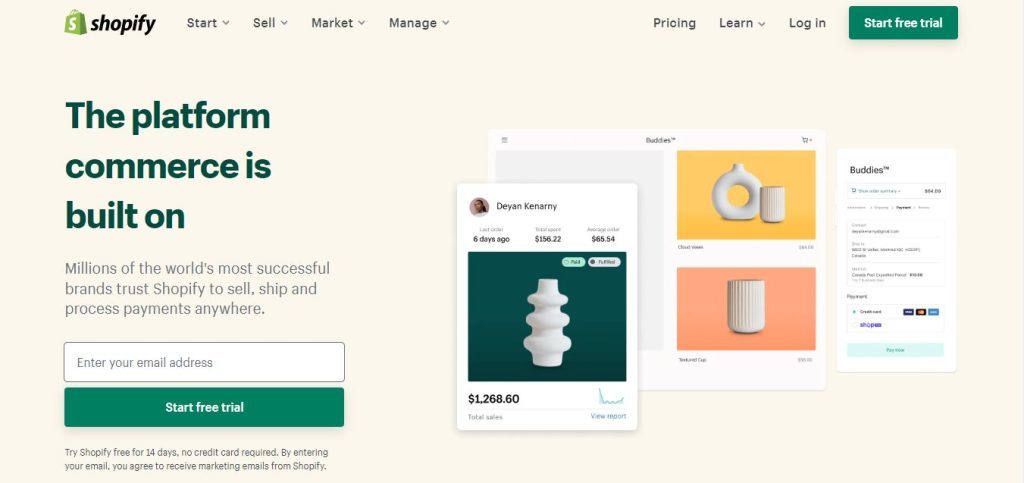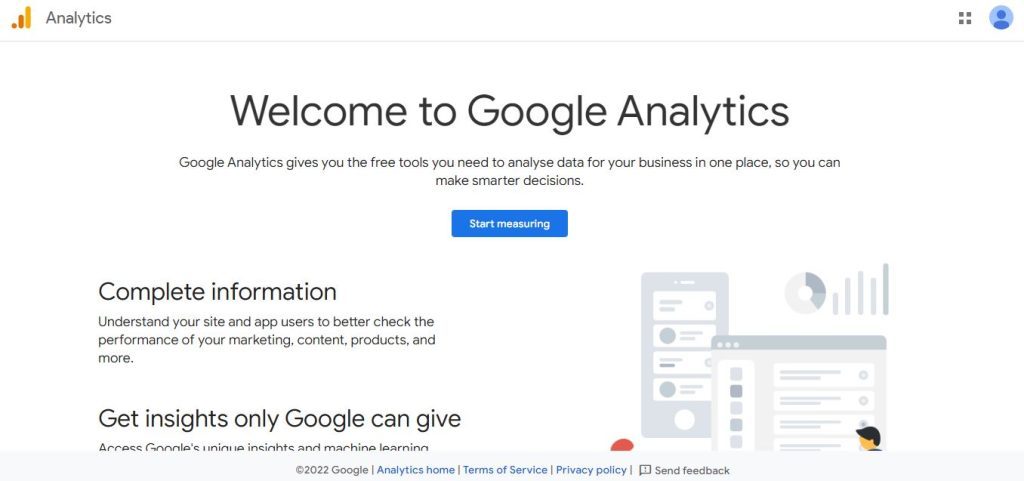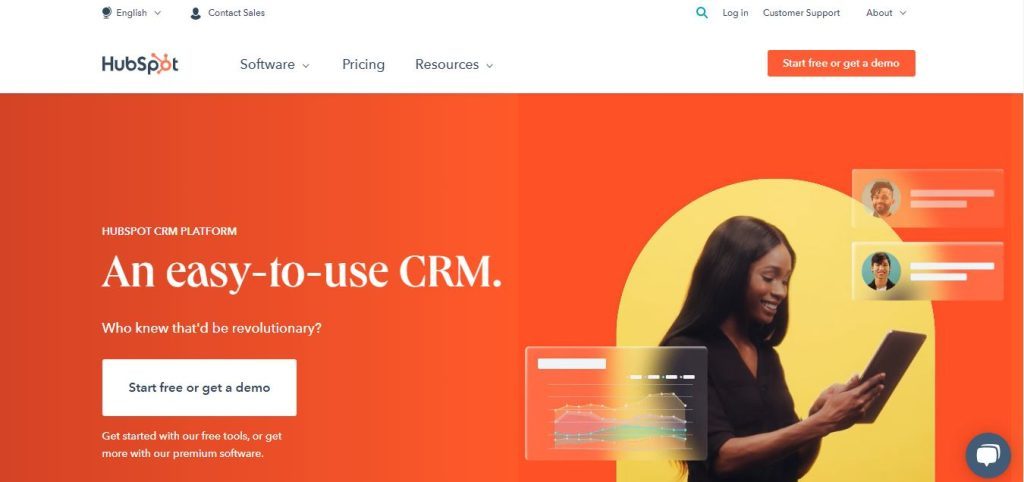We see a wave of different tools in all areas of online business. Their common feature is that they allow you to run various user programs to meet the needs of other end-users. Work development and optimization are made easier with no-code tools. These features have allowed them to be used in diverse circumstances and duties, from personal to professional. On the market, many applications are attempting to address the needs of a large number of potential users, estimated to be in the hundreds of millions.
No-code tools contain drag-and-drop alternatives that use low-code access. These tools are designed for business people who may not have any prior programming experience but want to create an app for internal usage. Because they feature predefined blocks, pages, and elements that are easy to use, no-code platforms are akin to blogging sites or webshops.
1. Mailchimp
 MailChimp is a top-rated email marketing service that you may use to send emails to your newsletter subscribers. These are crucial acts because they allow you to engage with all of your followers while also sending offers, discounts, or emails to the people who make up your list of followers. Newsletters are created with Mailchimp through its easy-to-navigate dashboard. You can use it for free or pay, depending on the number of individuals on your list.
MailChimp is a top-rated email marketing service that you may use to send emails to your newsletter subscribers. These are crucial acts because they allow you to engage with all of your followers while also sending offers, discounts, or emails to the people who make up your list of followers. Newsletters are created with Mailchimp through its easy-to-navigate dashboard. You can use it for free or pay, depending on the number of individuals on your list.
One of the best options is automation. It allows you to retarget advertisements for Instagram and Facebook. You can also track and record user leads, social media management, and campaign automation. Artificial intelligence-powered business intelligence and other purchasing and website development fields are all part of the Mailchimp platform.
2. Shopify
 Shopify is a famous eCommerce website builder with various functional, feature-rich themes. Whether you need a theme for your online store or a client’s following project website, with Shopify, you will have it all. Shopify is a platform that allows you to construct your online store quickly and easily without using a code. With Shopify, you can choose between various themes and layouts in Shopify to make your online business look and feel as you want it to.
Shopify is a famous eCommerce website builder with various functional, feature-rich themes. Whether you need a theme for your online store or a client’s following project website, with Shopify, you will have it all. Shopify is a platform that allows you to construct your online store quickly and easily without using a code. With Shopify, you can choose between various themes and layouts in Shopify to make your online business look and feel as you want it to.
This platform is excellent for salespeople who have no prior technology or design experience. Shopify allows you to construct your online store without the need for a developer. It features many templates, most of which are stylish and professional in appearance. These themes are also highly responsive, meaning they will look and feel fabulous on any screen, even smartphones.
3. Google Analytics

Google Analytics is a Google system that delivers several data collection and analysis tools for analyzing website traffic for free. Google Analytics reports disclose who visits your website and how they act, making them a crucial tool for getting to know potential customers and satisfying their demands. You can get helpful reports from Google Analytics regarding the number of visitors to a website, keyword analysis, demographic and geographic data about visitors, etc.
Suppose you wonder what it takes to use this tool; there is no room for worry because all you need is a Gmail account, and you are ready to use the Google Analytics platform. After that, using it allow this tool to take your business to another level.
4. Evernote
 Evernote is a tool for storing data that you find on the internet and that which you produce yourself. In other words, this is your cloud workspace because you can save everything that is vital or that you will need to work, pleasure, rest, and so on without having to carry pen drives, disks, or use computer stores all of the time.
Evernote is a tool for storing data that you find on the internet and that which you produce yourself. In other words, this is your cloud workspace because you can save everything that is vital or that you will need to work, pleasure, rest, and so on without having to carry pen drives, disks, or use computer stores all of the time.
The benefit is that it can all be categorized so that you will have a hard drive in the cloud, but it will be external. Furthermore, it aids in managing all information received and generated, and you will be able to classify photographs, audio, videos, recordings, and documents in one location.
5. HubSpot
 HubSpot is a program or platform for inbound marketing that is well-known worldwide. It is a multipurpose tool that provides various services and allows you to obtain multiple resources to complete multiple tasks that impact your company’s growth.
HubSpot is a program or platform for inbound marketing that is well-known worldwide. It is a multipurpose tool that provides various services and allows you to obtain multiple resources to complete multiple tasks that impact your company’s growth.
First and foremost, this application includes a content manager that allows users to create and publish websites. Because you may send messages or publications, and newsletters can be automated, it operates similarly to email. Its SEO function helps you to keep track of and improve the performance of your company’s networks. It is possible to develop valuable material via blogging, design and publish landing pages, and analyze, monitor, and publish channels to gauge the progress of ongoing advertising campaigns.
Conclusion
No-code tools are a perfect option if you need a primary application to handle organizational challenges and don’t want to rely on the IT development department. On the other hand, the coding platform requires relatively little expertise, so anyone with even a single day of programming experience can design everything they need.





Comments are closed.